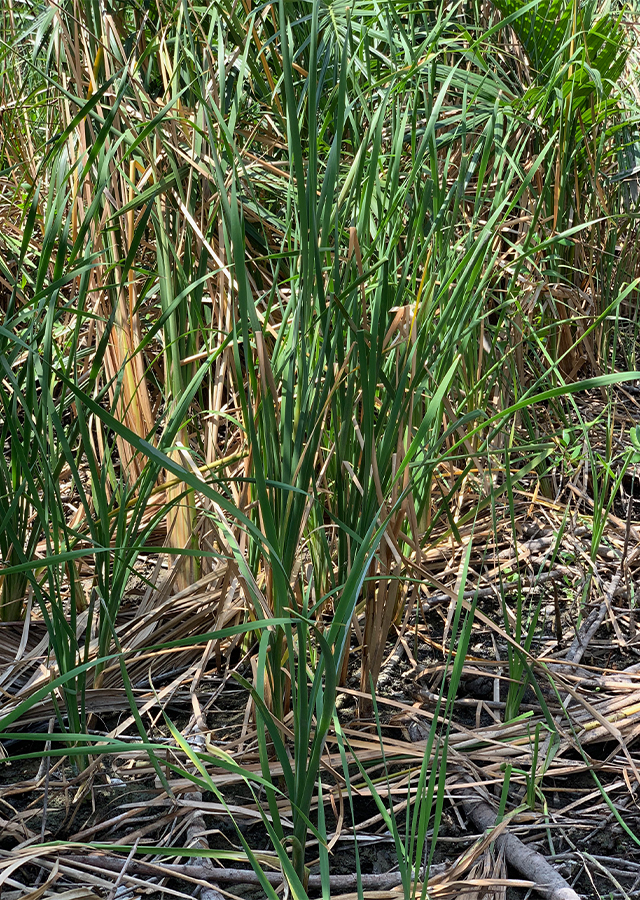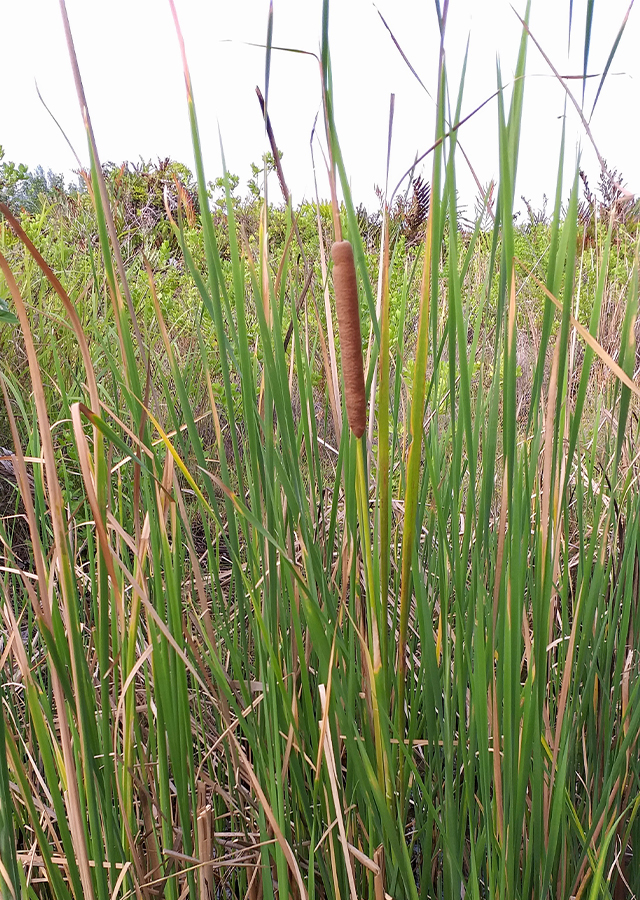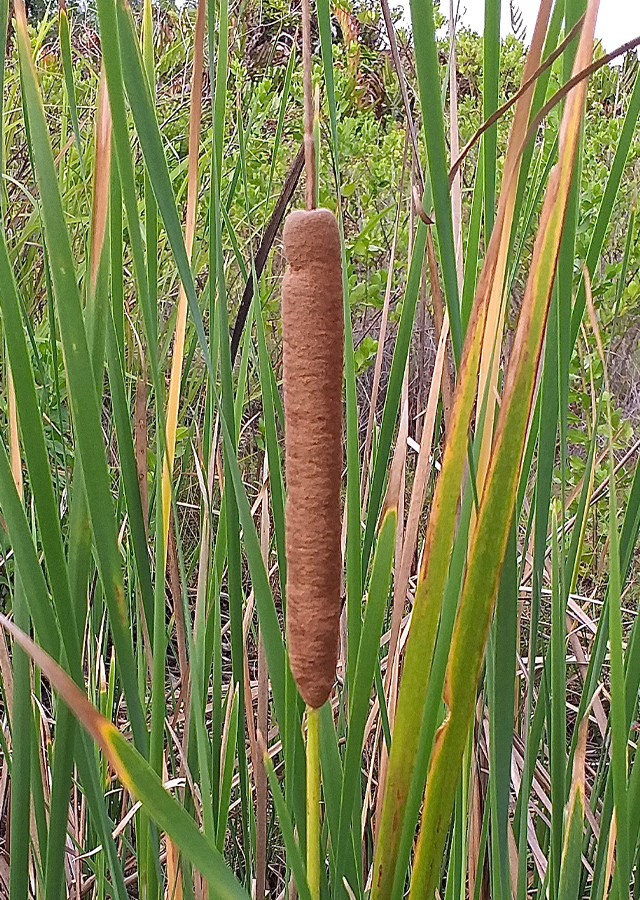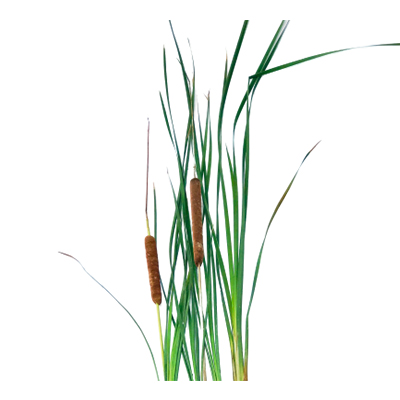Lesser Bulrush
Typha angustifolia L.
Typhaceae
Location in our garden
Principal



Synonym
Massula angustifolia (L.) Dulac
Typha elatior Boenn
Typha angustifolia var. columetensis Peattie
Habitus
Aquatic. A slender perennial aquatic emergent plant, growing to 1.5-2 m tall
Part Used
Leaves
Flowers
Roots
Twigs
Stem
Growing Requirements
Full Sunshine
Need Shade
Habitat
Wetland
Overview
The plant is native to Nova Scotia south through parts of New England along the coast to southern Florida. It is distributed throughout the temperate northern hemisphere. It is noted for attracting wildlife. Dense stands of cattails provide nesting areas and cover for many species of wetland animals plus their leaves provide nesting material for a number of different species of wetland birds.
Vernacular Names
Bardî (Arabic), Kleine lisdodde (Belgium), Pu hang (Chinese), Chandelle (French), Hime gama (Japanese), Smalkaveldum (Swedish), Banat (Malaysia).
Agroecology
Grows in shallow fresh water of lakes, rivers, ponds, marshes, wet meadows, estuaries, bogs, ditches in valley marshes, coastal sites at low elevation, oxbow lakes, navigation canals, and natural freshwater and wetland systems (topogenous and soligenous mires, fens). Occurs in peaty soils of salt marshes and colonizes deep sloughs and sloping marsh perimeters.
Morphology
- Roots - sturdy, rhizomatous roots that can extend 68 cm and are typically 2-4 cm in diameter.
- Stems - unbranched and cylindrical with long (60–100 cm), linear, narrow leaves, 5–10 mm wide and deep green.
- Leaves - plano-concave or plano-convex or strongly convex on the back, numbering <10 per stem, sheathing at the base and commonly overtopping the inflorescence.
- Flowers - monoecious, with the male and female parts of each flower spike being separated by a gap of 2-8 cm. Fruits - dry, dehiscent, ellipsoid follicle with long hairs containing large numbers of small pendulous seeds, with a straight, narrow embryo, brown, taste is sweet, acrid.
- Seeds - dry straw-colored and surrounded by the pistillate hair.
Cultivation
- It can be propagated by seed and also propagation vegetative by rhizomes (divisions).
- Propagated by division of rootstock in spring.
Chemical Constituents
Alkaloids, sterols, sugars, flavonoids, tannins, petroleum ether, benzene, chloroform, methanol, aliphatic, nonacosanetriols, stearic acid propanetriol ester, quercetin and naringenin.
Traditional Medicinal Uses
- The leaves are diuretic.
- The pollen is anticoagulant, astringent, diuretic, emmenagogue, haemostatic, refrigerant, sedative, suppurative and vulnerary.
- The roots are diuretic, galactagogue, refrigerant and tonic.
- It is used internally in the treatment of kidney stones, haemorrhage, painful menstruation, abnormal uterine bleeding, post-partum pains, abscesses and cancer of the lymphatic system.
- Decoction of the root is used in the treatment of venereal diseases, also to aid in the expulsion of placenta, treatment of gravel.
- Tea of roots and leaves is used for stomach cramps.
- Dried pollen when roasted with charcoal it becomes hemostatic, used traditionally for the treatment of dysmenorrhea, stranguria and metrorrhagia in China.



